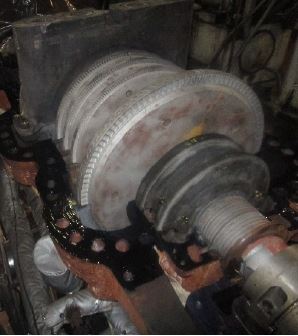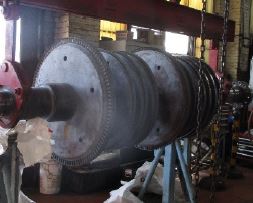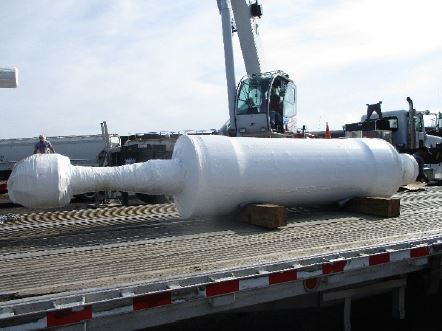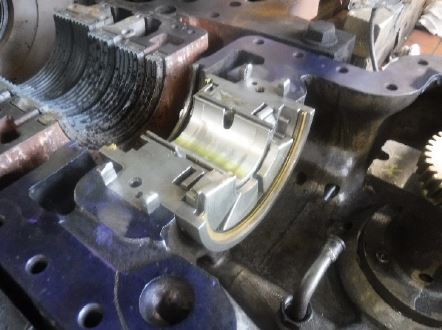Allis-Chalmers Industrial Steam Turbine Major Inspection
Power Services Group (PSG) was contracted by an industrial customer in the Midwest U.S. to perform a major inspection of their Allis-Chalmers steam turbine generator.
This unit is a non-condensing steam turbine that is directly coupled to an Allis-Chalmers air cooled generator. The turbine and generator set are of a three-bearing
design.
During the project, a Safety Meeting was held prior to the start of any work. The Safety Meeting topics were based on work activities to be performed during the shift. In addition, hazardous observations which could impact the safety of the team were discussed and resolved. Prior to performing work, a Job Safety Analysis (JSA) form was completed by the work team. This project had no accidents and no first aid incidents.
The steam path components, once removed, were dust blasted and received nondestructive examination (NDE). The NDE revealed minor indications on the stationary blading, and no repairs were deemed necessary at this time. The turbine rotor and stationary stage 6 were shipped to our steam path component inspection and repair facility in Pevely, Missouri for replacement of the 7, 8, 9 and 10 rotating blades, and repairs to the #6 stationary stage.


The generator field was removed from the stator and both the generator field and generator stator, received visual inspections and electrical testing. The generator field was shipped out to receive a retaining rings-off inspection. The stator was ice blast cleaned, received a re-wedge of the stator core windings, and final coated with an insulating epoxy. The journal bearings were removed and visually and dimensionally inspected and received dye-penetrant and ultrasonic testing. Inspections revealed that all of the bearings, new and in service, were in excellent condition. The pedestal oil deflectors were removed and visually and dimensionally inspected. All were found to be beyond industry standard clearance tolerances and were replaced.


The inlet control and extraction control valve racks were removed, cleaned and visually and dimensionally inspected. The valve poppets and seats were NDE inspected and found to be in very good condition and were returned to service. Some of the valve linkage bushings and pins were found to be worn and were replaced. The trip throttle valve (TTV) and operator were removed, disassembled, cleaned, and inspected. All inspections were approved and the components were returned to service. The lube oil cooler was removed and replaced by plant personnel. The lube oil system shaft driven main and steam driven auxiliary oil pumps were removed and received inspections. The main oil pump (MOP) and the steam driven auxiliary oil pump, (AOP) were found to be in good condition and were reassembled and returned to service. The lube oil reservoir was opened by PSG and initially cleaned by plant personnel. Some sediment and sludge were found during the initial cleaning of the lube oil main reservoir. PSG performed a final vacuum and hand cleaning of the interior of the reservoir prior to the lube oil system high velocity oil flush (HVOF). A lube oil system HVOF was performed utilizing an external pump and heating/filtering skid. The flush was ran for approximately 72 hours and was completed once system cleanliness was acceptable.
The system trip devices were inspected, cleaned and flushed; all linkages were checked for wear and proper freedom of movement. The mechanical over speed trip test was completed after initial startup and the unit was later tied on-line. PSG personnel demobilized the job site and were released to travel after another successful project startup.
Zero safety incidents, quality work, Nice job team!
